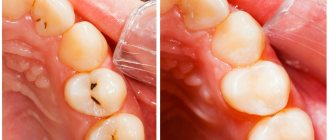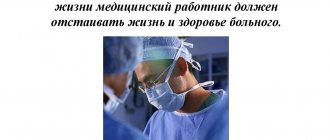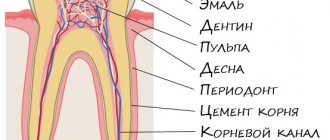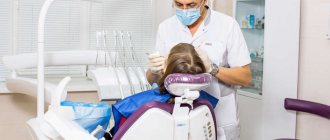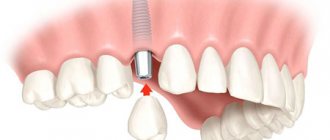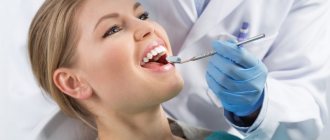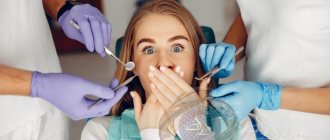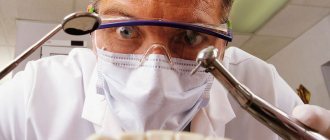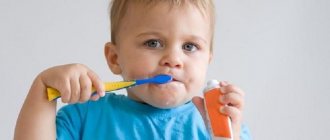Unbearable toothache, sore gums and bad breath require urgent attention from a dentist so as not to aggravate an existing problem.
The initial appointment is carried out by dental therapists. This is a sought-after specialization, since these doctors treat common pathologies of the gums, teeth and oral tissues. A general dentist has a broader range of expertise than a highly specialized orthodontist or surgeon. Such dentists eliminate periodontitis and periodontal disease, relieve pathological changes in the functioning of the salivary glands, treat cheilitis and glossitis (inflammation of the lips and tongue)
A dental therapist not only fills root canals, treats gums or removes tartar. A dentist works to study problems in the maxillofacial area and develop new methods to overcome them.
What diseases does a dentist treat?
At our Dynasty family clinic, dentists practice an individual approach to each patient, depending on the type, origin and dynamics of the disease, and the level of pain threshold.
The main tasks solved by a dentist-therapist:
- Diagnosis and determination of the causes of inflammation, treatment of periodontal disease, periodontitis, periodontoma, gingivitis and periodontitis;
- Treatment and prevention of caries (removal of tartar by the dentist and filling of canals);
- Restoration of mechanical damage to teeth (cracks, chips);
- Elimination of diseases of non-carious origin (pigmentation/erosion or enamel hypoplasia, fluorosis, pulp opening, amelogenesis, root fractures, dentinogenesis, odontogenesis).
At the Dynasty clinic, the dentist-therapist also carries out aesthetic restoration, which allows you to solve all problems within one office, without the involvement of an orthopedist. Without leaving the therapist’s chair, you can restore the front side of the surface of your teeth in two hours using veneers and lumineers (onlays for a “Hollywood smile”) - painlessly, quickly and effectively.
What is the responsibility of a dentist?
The profession of dentist combines several specialized areas. Each specialist solves a specific range of problems.
Dentist-therapist
If you have a toothache or gum inflammation, the receptionist at the dental clinic will give you a referral to this particular specialist. A dentist-therapist deals with the prevention and treatment of diseases of the teeth and oral cavity:
- caries (damage to hard tooth tissues),
- pulpitis (inflammation of the neurovascular bundle located in the dental canal),
- periodontitis (inflammation of periodontal tissues surrounding the tooth root),
- gingivitis (inflammation of the gums).
A dental therapist is consulted if you need to put a filling, restore a tooth damaged as a result of mechanical trauma, remove dental plaque or whiten the enamel.
To clarify the diagnosis in therapeutic dentistry, methods of radiography, stomatoscopy (examination of the dentition using optical instruments), luminescent diagnostics, and electroodontodiagnostics (determining the degree of damage to the dental pulp by measuring its sensitivity) are used.
Dental surgeon
Surgical dentists:
- remove teeth that cannot be restored;
- perform a cystectomy - surgical removal of a dental cyst;
- perform operations on the maxillofacial joint, the purpose of which is to eliminate congenital or resulting defects;
- They are engaged in implanting into the jawbone the basis for implants necessary for further dental prosthetics.
To make a diagnosis and plan treatment measures in surgical dentistry, hardware methods of radiography, magnetic resonance and computed tomography are used.
Orthopedic dentist
Deals with the elimination of anatomical dental defects that arise due to the absence or partial destruction of one or more teeth. If the tooth needs to be restored, the orthopedic dentist installs a crown on it; otherwise, a removable or fixed prosthesis is placed, or a dental implant is implanted.
Dentist-orthodontist
This specialist specializes in correcting misaligned teeth. If the dentition is uneven, the distance between the teeth is too large, or, on the contrary, they grow, “climbing” onto each other - this is not only a cosmetic defect. An incorrect bite or crooked teeth can cause problems with chewing, speech and breathing, as well as cause the development of anatomical pathologies of the face. Alignment of the dental arch in most cases is carried out using braces - non-removable orthodontic devices.
Periodontist
A periodontist treats diseases of the tissues surrounding the teeth and ensuring their fixation in the jaw. Periodontal tissues include:
- gums,
- periodontal ligaments connecting the tooth root to the jaw bone,
- alveolar processes - spongy tissue in which the root of the tooth is located,
- Dental cement is a special bone tissue that covers the root of the tooth.
To determine the functional state of the periodontium, research methods such as radiography, biomicroscopy, determination of autoflora of the oral mucosa, blood and urine tests are used.
Pediatric dentist
This type of medical care is aimed at the prevention and treatment of dental diseases in children and adolescents under 17 years of age. The condition of a child’s “temporary” teeth should be taken no less seriously than the condition of the permanent teeth. If baby teeth become unusable prematurely due to caries, this can negatively affect the formation of the dentition, in particular, the development of malocclusion. The pediatric dentist also corrects the dental arch using special onlays or braces.
Not only a person’s appearance, but also the condition of many organs and systems depends on the condition of their teeth. The correct choice of a specialized dentist is one of the conditions for the effectiveness of treatment and reducing its duration.
Consultations with a doctor online Taking care of your health is a life priority for everyone. Communicate with doctors online and receive qualified assistance without leaving your home. Try it Please note! The information on this page is provided for informational purposes only. To prescribe treatment, you must consult a doctor.
When should you contact a dentist?
Soviet-era people do not like to visit dentists because they are frightened by the strong association with the “scary drill machine” and severe pain. In medical dentistry, therapists use modern methods and equipment to completely anesthetize the process.
A dental therapist will help in cases where:
- During hygienic cleaning of the oral cavity, bleeding is observed;
- The enamel of the teeth has changed shade;
- Eliminates the cause of the unpleasant odor;
- Damage to the oral mucosa requiring intervention by a therapist;
- There is a constant “aching” pain that intensifies when you press on the tooth;
- Carious cavities appeared in the surface of the teeth and they began to react sharply to cold/hot;
- The gums become swollen and red, or new growths appear on them. The dentist will determine the cause of the inflammation and prescribe treatment;
- Teeth receive mechanical damage or have congenital cosmetic defects;
- Constant “wandering” pain radiating to the ear or temple - the help of a dentist is required immediately.
Useful information: It is recommended to visit a dentist twice a year for a routine examination and teeth cleaning with specialized instruments. Using a laser, the dentist removes mineralized deposits on the surface of the teeth, along with pathogenic bacteria. The procedure even allows you to lighten the enamel a little.
Recommendations after removal
Regardless of the method by which the tooth was removed, in the first 2 days the patient must observe a special diet, activity and hygiene. This is necessary to preserve the blood clot in the wound, which helps maintain the sterility of bone tissue and promotes its regeneration.
In the first 48 hours after removal you cannot:
|
Failure to comply with these recommendations most often causes the clot to fall out of the socket and the development of alveolitis or bleeding.
After tooth extraction it is recommended:
- make oral baths from chamomile and sage decoctions (the decoction prepared according to the instructions is taken into the mouth and held there for 10 minutes, without rinsing or moving the tongue) 2-3 times a day;
- take non-steroidal anti-inflammatory drugs (especially after atypical removal, when the tissue is severely damaged and swelling occurs) - nimesulide, diclofenac sodium, ibuprofen, paracetamol, etc. (it is important that the medicine does not reduce blood clotting).
Sometimes patients need preliminary preparation for removal. People taking aspirin and other medications that impair blood clotting should stop taking them a week before the procedure. For those who suffer from increased excitability and anxiety, you can start taking valerian or motherwort 1-2 weeks before removal, having previously agreed with your dentist and your therapist.
Even if the removal was painless and quick, you should not ignore the doctor’s advice. The right approach to rehabilitation will help you avoid complications and recover faster.
Cost of dental services
The dentist provides a wide range of services, so prices depend on many factors: the type of disease and the complexity of its treatment; consumables and number of sessions with the dentist.
Basic cost of services:
- Professional cleaning – 170 rubles;
- Treatment of pulpitis and periodontitis – from 550 rubles;
- Elimination of caries – from 300 rubles;
- Chemical whitening of all teeth – 8,000 rubles.
The full list is in the price list on the website.
If you need professional dental help, our clinic offers the services of specialists with many years of experience.
Where to find a qualified dental surgeon in Ivanteevka?
To receive professional dental care, contact the Sanident clinic, one of the largest dentists in Ivanteyevka. Our prices for dental treatment and quality of service will pleasantly surprise you. We employ experienced specialists who use innovative treatment methods that allow the patient to save even the most damaged teeth. Our doctors also carry out effective treatment of periodontal disease and other aesthetic operations in the field of periodontology.
You can find the Sanident comprehensive dental clinic at the following addresses:
Ivanteevka, st. Novoselki, 4 (Ivanteevka railway station); Shchelkovo, st. Central, 80 (railway station Voronok).
Useful recommendations for oral care from a dentist
The dentist promotes caries prevention and gives basic advice:
- Maintain good hygiene (brush your teeth after eating and floss);
- When brushing, do not forget about your tongue, because germs accumulate on it first;
- Limit your consumption of carbonated and coloring drinks, chips, candies and candies;
- Get a preventive examination at the dentist.
A dental therapist is able to prevent diseases and treat them at an early stage, which will help avoid many problems.
To make an appointment, call the phone numbers listed on the website or use the feedback form.
What is the typical tooth extraction process like?
When teeth are removed, local anesthesia is first administered. The doctor then removes about half a centimeter of gum tissue from the tooth. Then forceps are applied to the crown of the tooth being removed. When removing teeth in the upper jaw, the doctor presses on the forceps with his entire right hand. When removing teeth on the lower jaw, pressure is applied with the thumb of the right hand. The tooth is then dislocated to destroy the tissue that holds it in place. To remove single-rooted teeth, such as front teeth, rotational or pendulum-like movements are performed. When removing molars, pendulum-like movements are performed. The culmination of this action is the tooth extracted from the hole.
Pediatric dentistry: how an orthodontist treats
A pediatric orthodontist chooses a treatment method only after a complete examination of the patient. When making a decision, the doctor takes into account:
- child's age;
- type of bite - milk, permanent, replaceable;
- orthodontic pathology - anomalies of teeth, dentition, bite.
The most popular correction methods:
- myogymnastics (myotherapy) - a course of special exercises aimed at strengthening the muscles of the maxillofacial area;
- surgical method - necessary to eliminate pronounced deformations of the bite, jaw rows, dental sequences;
- hardware therapy - the use of fixed and removable structures to correct the bite or individual units.

